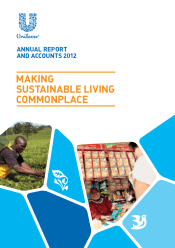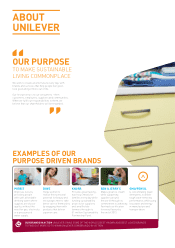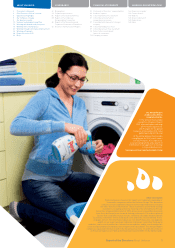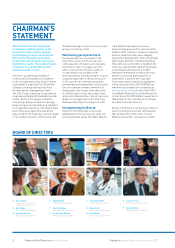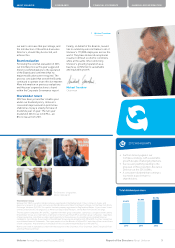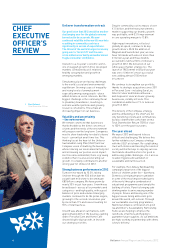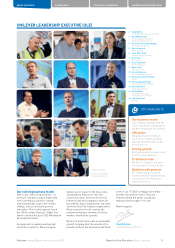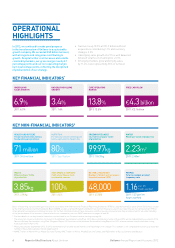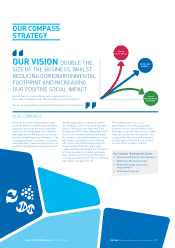Unilever 2012 Annual Report Download - page 12
Download and view the complete annual report
Please find page 12 of the 2012 Unilever annual report below. You can navigate through the pages in the report by either clicking on the pages listed below, or by using the keyword search tool below to find specific information within the annual report.
9
Unilever Annual Report and Accounts 2012 Report of the Directors About Unilever
ABOUT UNILEVER GOVERNANCE FINANCIAL STATEMENTS SHAREHOLDER INFORMATION
OUR
BUSINESS
MODEL
Our busness model
s desgned to delver
sustanable growth For
us, sustanablty s ntegral
to how we do busness In a
world where temperatures
are rsng, water s scarce,
energy s expensve, santaton
s poor n many areas, and
food supples are uncertan
and expensve, we have both
a duty and an opportunty to
address these ssues n the
way we do busness
The inputs to the model, like
those of all major packaged
goods manufacturers, are
threefold: brands; people; and
operations. These map directly
on to our Compass ‘Winning
with’ pillars – both continuous
improvement and the market
place pillars support the
operations strand of the model.
The differentiator in our business
model is our USLP and the goal
of sustainable living.
The outputs of the model are
threefold: sustained growth;
lower environmental impact;
and positive social impact.
These align directly with
our Vision statement.
The diagram below represents
our virtuous circle of growth.
It summarises, simply, how we
derive profit from the application
of our business model.
A VIRTUOUS IRLE OF ROWTH
Our brands
Strong brands and innovation
are central to our ambition to
double in size. We are investing
in brand equity, finding and
strengthening the connections
between consumers and the
products they buy. Where equity
is strong, we are leveraging it –
creating efficiencies by focusing
on fewer, bigger projects that
enhance margins. And we are
seeking superior products
which consumers will prefer,
driving profitable growth.
Our operatons
On any given day 2 billion
consumers use our products
and we want to reach many
more, by developing innovative
products that address different
consumer needs at different
price points. To do this we use
our global scale to help deliver
sustainable, profitable growth
by seeking to add value at
every step in the value chain
by enhancing product quality
and customer service, and
rolling out innovations faster
across all markets.
Our people
Sustainable, profitable growth
can only be achieved with the
right people working in an
organisation that is fit to win,
with a culture in which
performance is aligned with
values. We are increasingly
an agile and diverse business
with people motivated by doing
good while doing well. We
are building capability and
leadership among our people
and attracting some of the best
talent in the market place.
Sustanable lvng
For us, sustainable, equitable
growth is the only acceptable
business model. Business
needs to be a regenerative
force in the system that gives
it life. For example, by reducing
waste, we create efficiencies
and reduce costs, helping
to improve margins while
reducing risk. Meanwhile,
looking at more sustainable
ways of developing products,
sourcing and manufacturing
opens up opportunities for
innovation while improving
the livelihoods of our suppliers.
Proftable volume growth
Profitable volume growth is the basis of the
virtuous circle of growth. Stronger brands
and innovation are the key drivers behind it.
Consistently strong volume growth builds
brand equity as we reach more consumers,
more often.
ost leverage + effcency
Profitable volume growth allows
us to optimise the utilisation of our
infrastructure and spread fixed costs
over a larger number of units produced,
reducing the average cost per unit.
It improves our profitability and allows
us to invest in the business.
Innovaton + marketng nvestment
Lower costs and improved efficiency
enable us to strengthen our business
further. New and improved products
are the result of investment in R&D
and, together with effective marketing,
strengthen our brand equity. This results
in profitable volume growth, self-
perpetuating the virtuous circle of growth.


